6+ Best Milk Substitutes for a Latte (Plus a Recipe)
Whether you’re allergic to dairy or you’re on a vegan diet, here are the best dairy-free milk substitutes for a great latte including oat milk, coconut milk, soy milk, cashew milk, rice milk, and hemp milk. Skip the dairy milk and use one of these best milk alternatives for frothing instead!

A latte is a coffee drink that originated from Italy and is short for “caffè latte,” which means “milk coffee.” It’s made with espresso and steamed milk.
A typical latte recipe consists of one or two shots of espresso, a significant amount of steamed whole milk (approximately 5 to 6 times the amount of coffee), and a small amount of milk froth on top. The main flavor of a latte should still be coffee, but it is significantly milder and creamier due to the amount of milk.
The proportion of espresso, steamed milk, and milk froth can vary based on personal preference or coffee shop style, but generally, the ratio is approximately 1:5:1.
Lattes are often served in a tall glass or mug, and many baristas create beautiful “latte art” on top of the drink by carefully pouring the frothed milk into the espresso in such a way that creates a pattern or design.
It’s worth noting that a latte is different from a cappuccino, another popular coffee drink. A cappuccino typically has equal parts of espresso, steamed milk, and milk froth, making it stronger in coffee flavor and less milky compared to a latte.
Milk Substitutes for Latte
Whether you’re lactose intolerant, vegan, or just trying to cut back on dairy, there are a number of plant-based alternatives that you can use for making lattes.
Here are some of the best options of plant-based milks that will satisfy the pickiest of coffee drinkers.
1. Oat milk
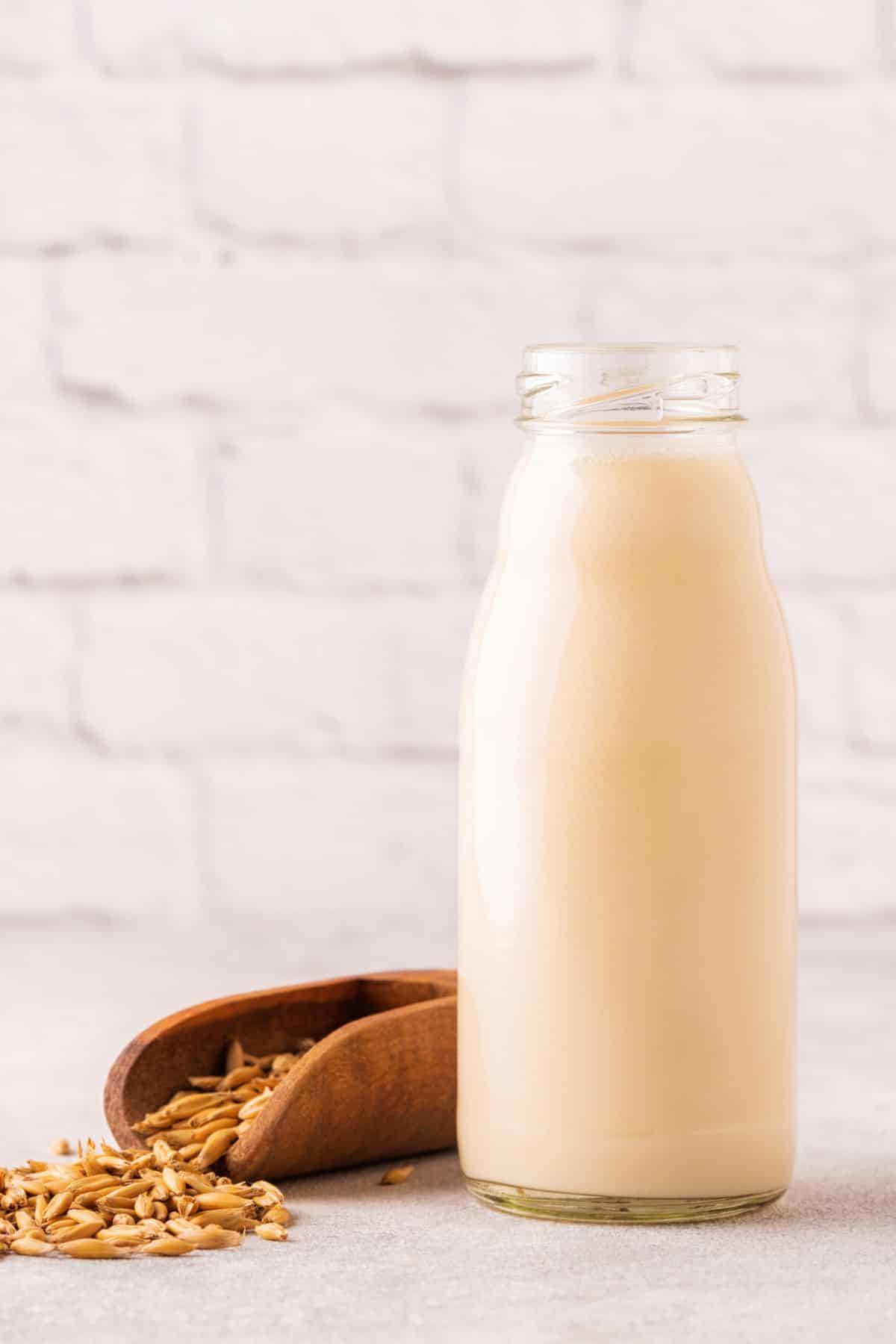
Oat milk is becoming increasingly popular as an alternative milk, especially in coffee shops. It has a creamy texture that’s closer to low-fat cow’s milk than many other alternatives, and it froths very well, which makes it excellent for lattes.
Plus, its natural sweetness can enhance the flavor of your latte.
See the end of this post for my Oat Milk Latte recipe!
2. Coconut milk
Coconut milk is rich and creamy with a distinct flavor.
It froths fairly well for lattes, but the strong coconut flavor can dominate the taste of your coffee, so it’s best for those who enjoy that flavor. Coconut milk is the best option if you want a very creamy latte, but it doesn’t have much protein.
You can use either full-fat or light canned coconut milk for your latte, but the full-fat version will provide the richest flavor. Look for it in the baking section of most grocery stores.
3. Soy milk
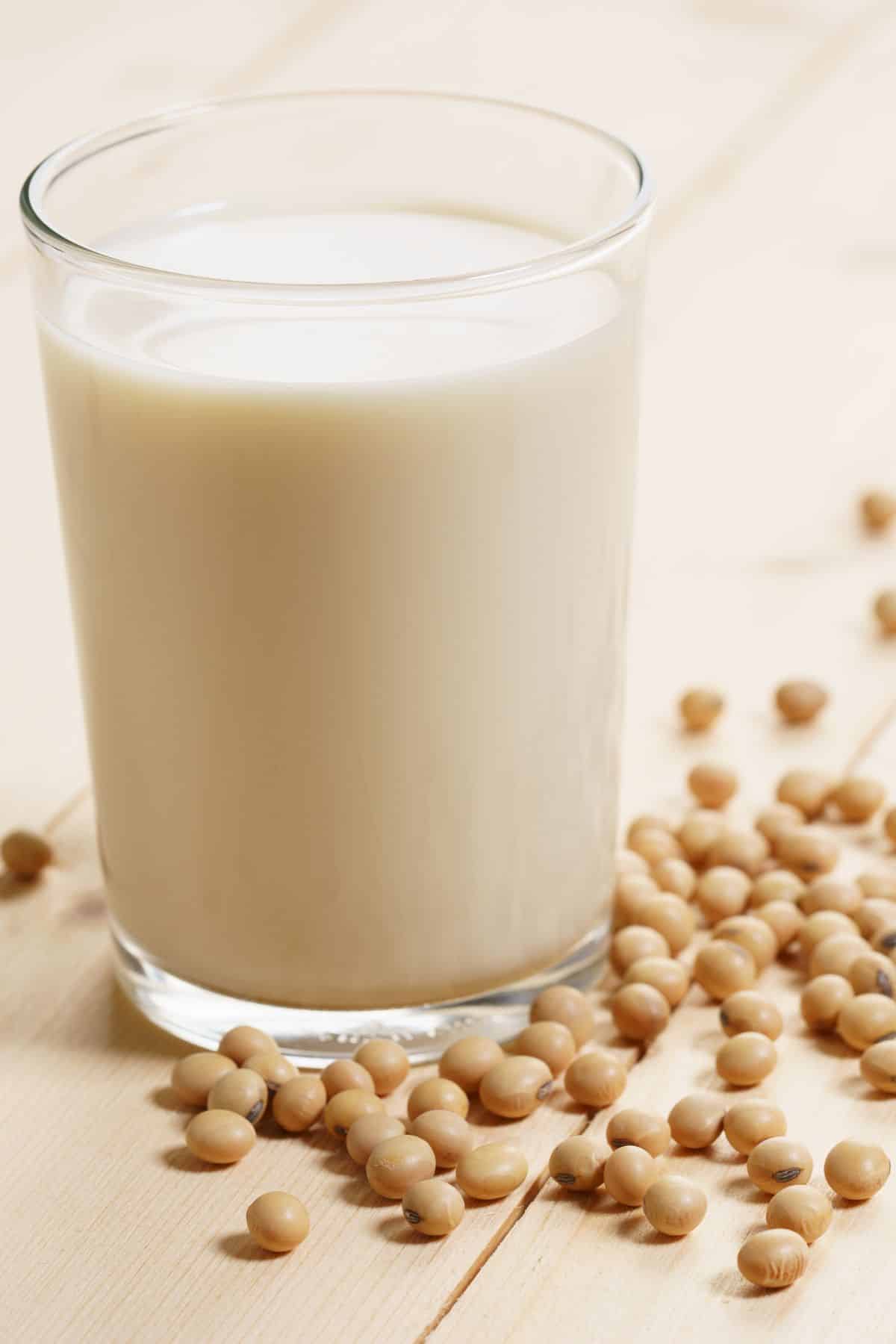
Soy milk is another common choice and it’s good for frothing because of its high protein content. It has a slightly thicker texture and a mild flavor that works well in lattes.
Ideally, you would use organic soy milk for your lattes. Don’t use it if you have a soy sensitivity. Otherwise, it might be the best milk alternative and perhaps the best choice for a latte.
You can use either vanilla soy milk or plain soy milk to replace regular milk.
4. Cashew milk
Cashew milk is another option that is creamy and froths reasonably well. It has a sweet, subtle flavor and can make a rich, velvety latte.
This is one of the great plant-based milk alternatives that has a neutral taste and slightly nutty flavor. You can make your own homemade cashew milk.
5. Rice milk
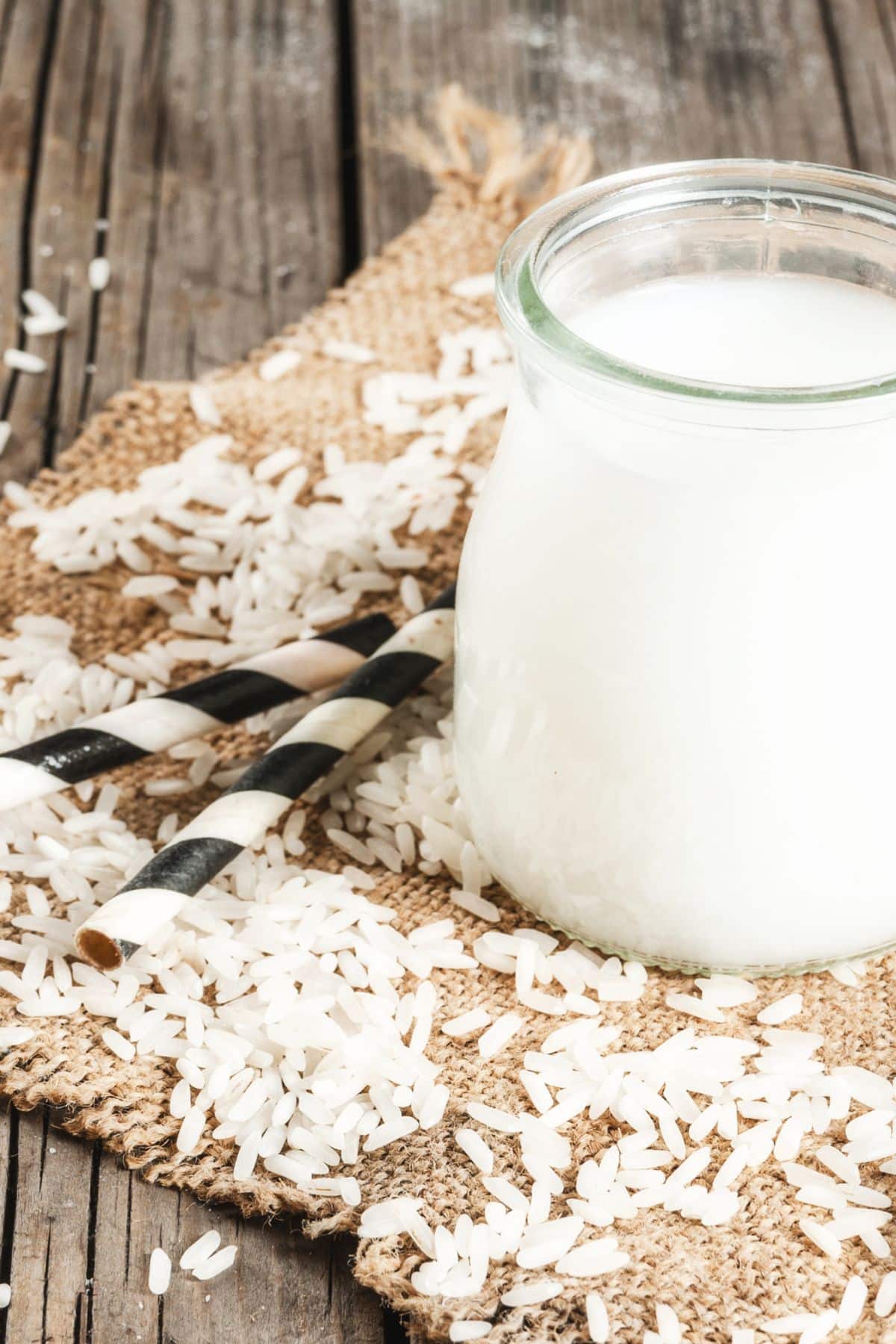
Rice milk is hypoallergenic, making it a good option for those with allergies or sensitivities to nuts and soy. It’s a great option for those who can’t tolerate other types of vegan milk.
However, it’s quite thin and doesn’t froth as well as some of the other plant milk or nondairy milks.
6. Hemp milk
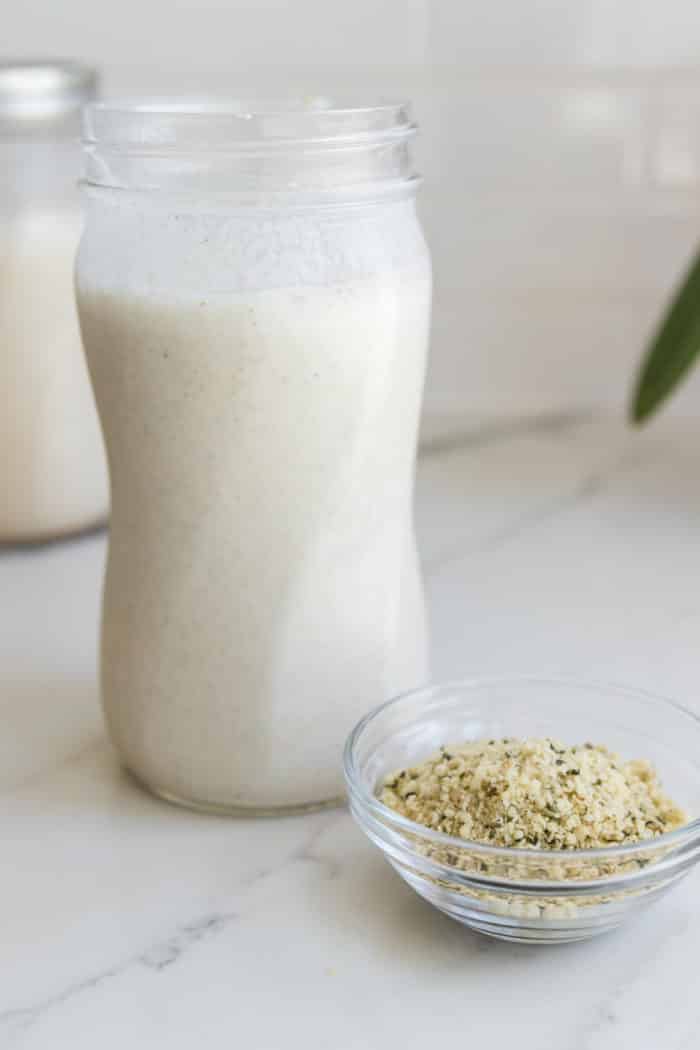
Hemp milk is a less common alternative, but it’s rich in Omega-3 fatty acids so it has some health benefits.
It has a slightly nutty, sweet flavor, but it doesn’t froth as well as some other alternatives. See my recipe for Vanilla Hemp Milk.
Bonus non-dairy alternatives for latte
Besides the options listed above, you can also try almond milk, macadamia milk, hazelnut milk, or pea milk.
When choosing a milk alternative for your latte, remember that the choice is very personal. It depends on your dietary needs and preferences, the flavor profile you prefer, and how well the alternative froths for that perfect latte texture.
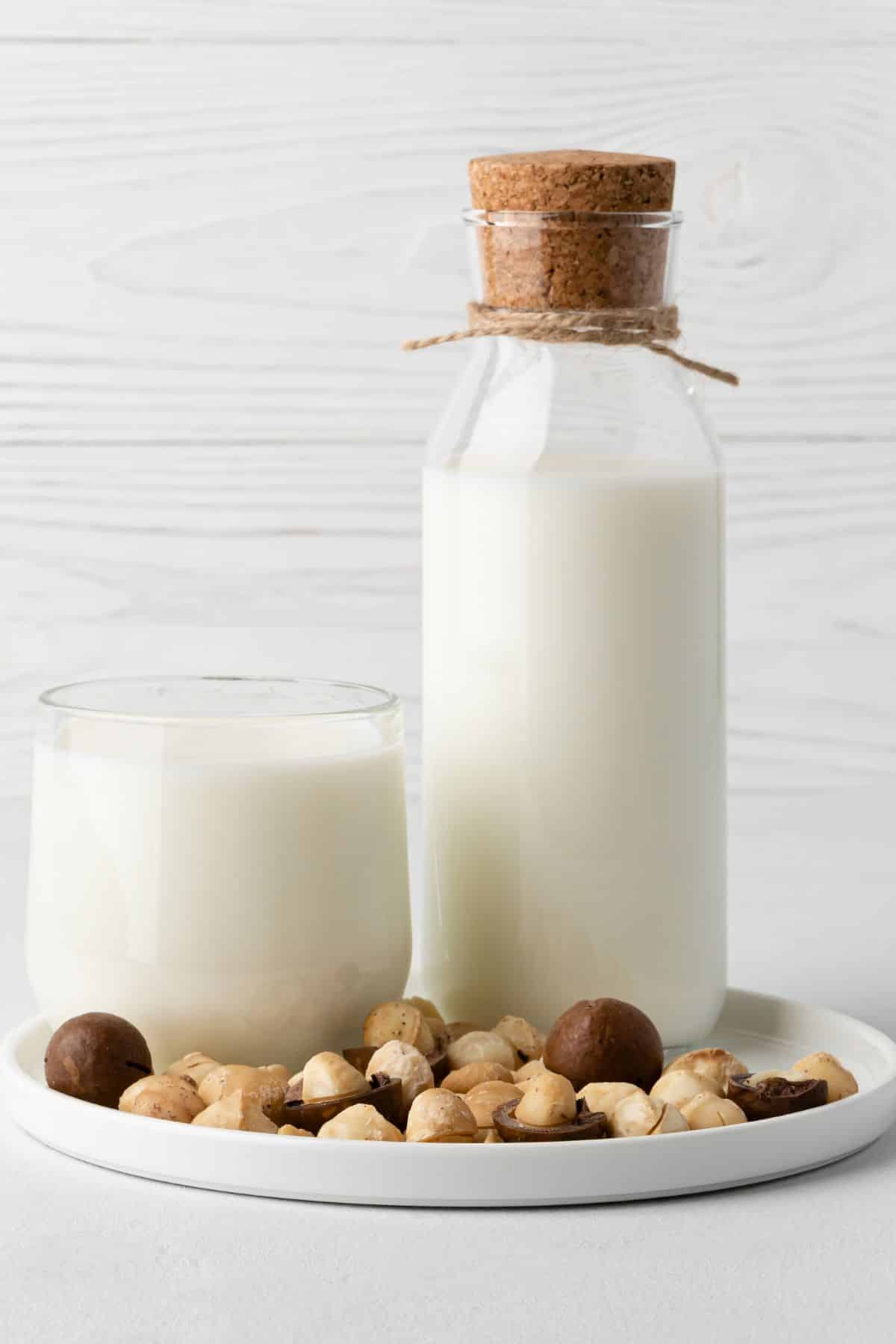
Why Use Coconut Oil in Dairy-Free Lattes?
Coconut oil is a common ingredient in dairy-free latte recipes because it helps to create a frothy texture in the non-dairy milk. This is particularly important when making a latte, as the frothiness adds a nice visual appeal and texture to the drink.
Additionally, the small amount of coconut oil in the recipe adds a subtle coconut flavor that can complement the coffee and other ingredients.
However, the coconut oil can be optional, and the recipe can still work without it if you prefer to omit it.
Pros and Cons
Here’s a chart summarizing various substitutes for milk in lattes, including their respective pros and cons:
| Substitute | Pros | Cons |
|---|---|---|
| Oat Milk | Creamy texture, froths well, enhances flavor with natural sweetness. | May not be suitable for gluten-sensitive individuals if not certified gluten-free. |
| Coconut Milk | Rich and creamy, froths fairly well. | Strong flavor may overpower the coffee. |
| Soy Milk | High protein content, good for frothing, mild flavor. | Not suitable for those with soy sensitivities. |
| Cashew Milk | Creamy, froths reasonably well, sweet and subtle flavor. | Allergen for those sensitive to nuts. |
| Rice Milk | Hypoallergenic, good for those with nut/soy allergies. | Thin texture, does not froth well. |
| Hemp Milk | Rich in Omega-3 fatty acids, slightly nutty and sweet flavor. | Does not froth as well as other milk alternatives. |
This chart provides a concise overview of the alternatives for milk in lattes, highlighting their suitability based on texture, frothability, flavor, and allergen concerns. Each substitute offers unique benefits and potential drawbacks, allowing you to choose the most suitable option for your latte needs.
FAQs
It depends, but most coffee shops do offer dairy-free milk alternatives. You will just have to ask and see what is available.
Soy milk will have the most similar consistency and nutritional profile to regular milk. It does have a slightly nutty taste, but usually the coffee taste will prevail. Soy milk might be the best option for a non-dairy type of milk.
Don’t Miss These Coffee Recipes!
Don’t forget to join my newsletter list to get exclusive clean eating recipes and tips. The newsletter is 100% free with no spam; unsubscribe anytime.
Print
Oat Milk Latte Recipe
Whether you’re allergic to dairy or you’re on a vegan diet, here is a great recipe for a dairy-free latte.
- Total Time: 7 minutes
- Yield: 1 Serving 1x
Ingredients
- 1 cup hot brewed coffee
- 1/2 cup of oat milk (or any other non-dairy milk of your choice)
- 1 teaspoon coconut oil
- 1 teaspoon honey (or your choice of sweetener)
- Pinch of cinnamon (optional)
Instructions
- Brew a cup of coffee using your preferred method.
- In a small saucepan, heat the oat milk and coconut oil over medium heat. Whisk the mixture until the coconut oil is melted and the oat milk is frothy.
- Pour the brewed coffee into a mug.
- Pour the frothy oat milk mixture over the coffee.
- Add honey or sweetener to taste, if desired.
- Sprinkle a pinch of cinnamon on top for added flavor.
Notes
- This recipe can easily be doubled or tripled for more servings.
- The nutrition data for this recipe does not include the honey or any sweetener.
- Prep Time: 5 minutes
- Cook Time: 2 minutes
- Category: Beverage
- Method: Stovetop
- Cuisine: Dairy-Free
- Diet: Gluten Free
Nutrition
- Serving Size: 8 ounces
- Calories: 103
- Sugar: 3.5 g
- Sodium: 54.7 mg
- Fat: 7 g
- Saturated Fat: 4 g
- Carbohydrates: 8 g
- Fiber: 1 g
- Protein: 1.8 g
- Cholesterol: 0 mg
Don’t forget to join my newsletter list to get exclusive clean eating recipes and tips. The newsletter is 100% free with no spam; unsubscribe anytime.
About the Author: Carrie Forrest has a master’s degree in public health with a specialty in nutrition. She is a top wellness and food blogger with over 5 million annual visitors to her site. Carrie has an incredible story of recovery from chronic illness and is passionate about helping other women transform their health. Send Carrie a message through her contact form.



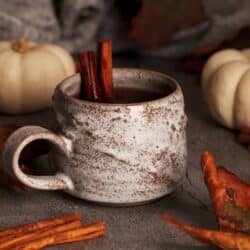
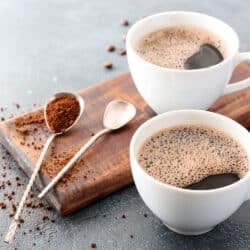
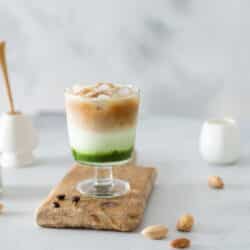




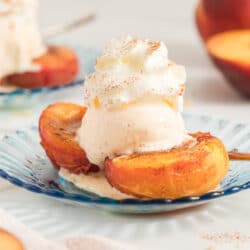

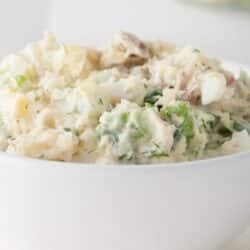
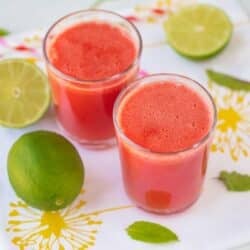
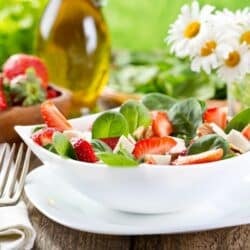

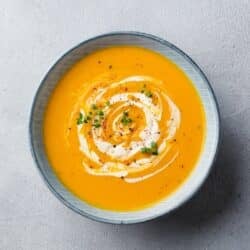
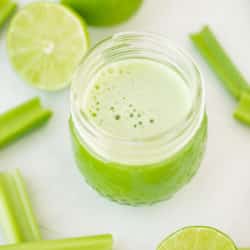


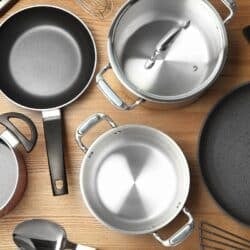


I love a good oat milk latte! So yummy!